Silicone rubber is odorless and non-toxic, not afraid of high temperatures and cold characteristics, at 300 degrees Celsius and minus 90 degrees Celsius “calm”, “face does not change color”, and still has good strength and elasticity.
Silicone rubber also has good electrical insulation, oxygen resistance and aging resistance, light resistance and aging resistance, as well as mold resistance, chemical stability, etc.
Since the introduction of high-temperature vulcanized dimethyl silicone rubber, the rapid development of silicone rubber, making silicone rubber widely used.
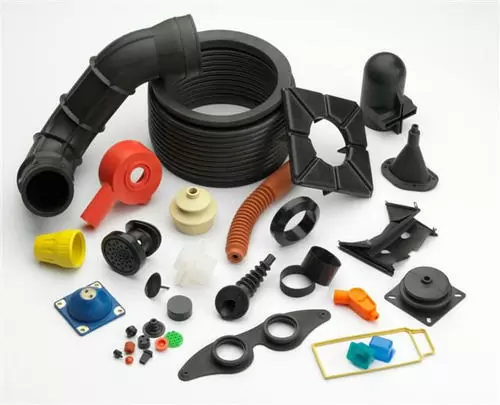
Structural characteristics and excellent performance of silicone rubber
1. High molecular bonding energy
C-C bond energy is 348 KJ/mol; Si-O bond energy is as high as 444 KJ/mol; while the ultraviolet (300 nm) energy is only 400 KJ/mol. The molecular chain is helical, the bond angle of silicone is larger (130°- 160°), and the intermolecular force is small.
2. The unique properties of silicone rubber
Excellent weathering performance, resistance to UV, O2, O3, salt spray, etc.
Low surface energy, excellent water repellency, and water repellent migration.
Excellent insulation performance, and stable dielectric properties over a wide range of temperatures and frequencies. Very good arc resistance and leakage resistance.
Good resistance to high temperatures can be used continuously at 180-200℃. Although the strength of silicone rubber at room temperature is only half of that of natural rubber or some synthetic rubber, in a high-temperature environment above 200℃, silicone rubber can still maintain a certain degree of flexibility, resilience, and surface hardness, and no significant changes in mechanical properties.
Good elasticity, and low-temperature flexibility, can be used at -50 ℃. The glass transition temperature of silicone rubber is generally -70~-50℃, and the special formulation can reach -100℃, indicating its excellent low-temperature performance. This is significant for aviation and aerospace industrial lines.
Good flame retardant performance, when burning, almost no toxic and harmful gases are released. It can be made into transparent products, and defects such as bubbles or impurities can be easily detected by visual inspection.
Compared with general-purpose rubber, all three major types of silicone rubber have relatively simple mating components, and so do the hot vulcanized types.
In addition to the raw rubber, the matching agent mainly includes a reinforcing agent, vulcanizing agent, and some special additives, generally, only 5 to 6 components to form a practical formula.
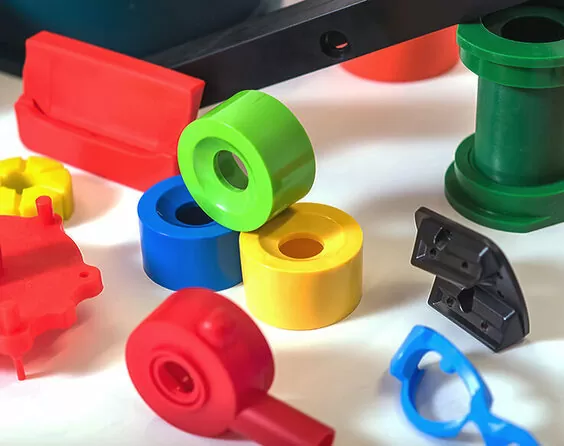
Silicone rubber formulation design should take into account the following points:
(1) Silicone rubber for high saturation of raw rubber, usually can not use sulfur yellow vulcanization, and the use of hot vulcanization.
Hot vulcanization is organic peroxide as a vulcanizing agent, so the rubber must not contain active substances that can interact with the decomposition products of peroxide, otherwise, it will affect the vulcanization.
(2) Silicone rubber products are generally used at high temperatures, the compound should remain stable at high temperatures, for this reason, inorganic oxides are usually used as reinforcing agents.
(3) Silicone rubber in trace amounts of acid or alkali and other polar chemical reagents is easy to cause the cleavage and rearrangement of the silicone bond, resulting in the reduction of the heat resistance of silicone rubber.
So the selection of matching agents must take into account their acidity and alkalinity, and should also take into account the acidity of peroxide decomposition products, so as not to affect the performance of vulcanized rubber.
Selection of raw rubber
When designing the formula, the raw rubber with different characteristics should be selected according to the performance and use conditions of the product.
In general silicone rubber products require the use of temperature in the range of -70 ℃ ~ 250 ℃, can use vinyl silicone rubber; when the use of products require higher temperature (-90 ~ 300 ℃), can use low phenyl silicone rubber; when the products require high and low-temperature resistance and need to resist fuel or solvent, should use fluorosilicone rubber.
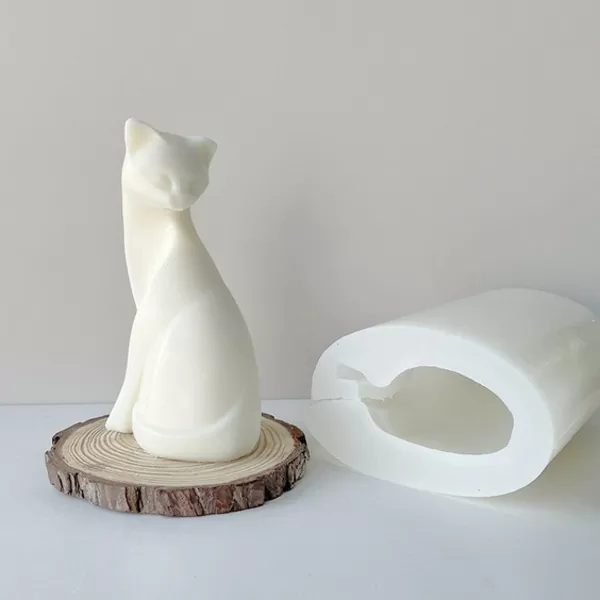
Vulcanizing agent
The vulcanizing agent used for hot vulcanized silicone rubber is mainly organic peroxide, aliphatic azo compounds, inorganic compounds, high-energy rays, etc., of which the most commonly used is an organic peroxide.
This is because organic peroxides are generally more stable at room temperature, but at higher vulcanization temperatures can rapidly decompose to produce free radicals, thus making the silicone rubber cross-linked.
Peroxides can be divided into two categories according to their activity level. One type is general-purpose, i.e. high activity which can be vulcanized for all kinds of silicone rubber; the other type is vinyl-specific, i.e. low activity, which can only be vulcanized for silicone rubber containing vinyl.
In addition to the above general differences between the two types of peroxides, each peroxide has its characteristics. Vulcanizing agent BP is the most commonly used vulcanizing agent for molded products, with fast vulcanization speed, and high production efficiency, but not suitable for the production of thick products.
Vulcanizing agent DCBP because its products are not easy to volatilize, vulcanization without pressure will also produce bubbles, especially suitable for pressed products of hot air continuous vulcanization, but its decomposition temperature is low, easy to cause scorching, rubber storage time is short.
The vulcanizing agent BP and DCBP are crystalline powder, explosive, for safe operation and suitable for dispersion, they are usually used to disperse in silicone oil or silicone rubber in the past, that a general content of 50%. The boiling point of the vulcanizing agent is 110℃ which is very volatile.
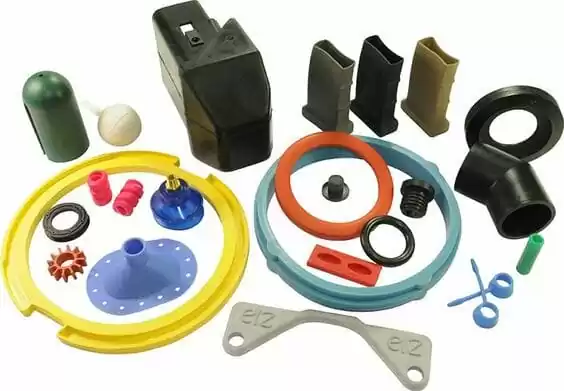
The vulcanizing agent evaporates when the rubber is stored at room temperature and is best used in the form of a molecular sieve as a carrier. The vulcanizing agent DTBP does not react with air or carbon black and can be used in the manufacture of conductive rubber and products with difficult molding operations.
The vulcanizing agent DBPMH is similar to DTBP, but it does not volatilize at room temperature, and its decomposition products are volatile, which can shorten the second stage vulcanization time.
The vulcanizing agent DCP does not volatilize at room temperature, hand as the characteristics of a vinyl special type, while the decomposition product volatility is also low, and can be used for the vulcanization of small external pressure occasions. The vulcanizing agent TBPB is used in the manufacture of sponge products.
The amount of peroxide is influenced by a variety of factors. For example, raw rubber species, filler type and amount, processing technology, etc. Generally speaking, the vulcanizing agent should be as little as possible as long as the desired crosslinking can be achieved.
But the actual amount is much higher than the theoretical amount because a variety of processing factors must be taken into account, such as uneven mixing, peroxide loss in the storage of rubber, vulcanization of air, and other compounding agents blocking.
For vinyl silicone rubber molded products with rubber, a variety of peroxide common range of weight parts are as follows.
Component Weight
Thixotropic agent BP 0.5 ~ 1
Thixotropic agent DCBP 1~2
Thixotropic agent DTBP 1~2
Thixotropic agent DCP 0.5~1
Sulfurizing agent DBPMH 0.5~1
Thixotropic agent TBPB 0.5~1
With the increase in vinyl content, the amount of peroxide should be reduced. The amount of peroxide in the adhesive paste pressed product adhesive and adhesive should be higher than that in the molded adhesive.
In some cases, the use of two peroxides can reduce the amount of vulcanizing agent, and can appropriately reduce the vulcanization temperature, improving the effect of vulcanization.
Reinforcing agent
The strength of un-reinforced silicone rubber vulcanized rubber is very low, only about 0.3MPa, which has no practical use value. The use of an appropriate reinforcing agent can make the strength of silicone rubber vulcanization rubber to 3.9-9.8MPa, which is extremely important to improve the performance of silicone rubber and extend the service life of products.
Silicone rubber reinforcing filler selection should take into account the high-temperature use of silicone rubber and vulcanization with peroxide, especially the adverse effects of acidic and alkaline substances on silicone rubber.
The former has a diameter of 10-50nm and a specific surface area of 70-400m²/g, with a better reinforcement effect; the latter is 300-10000nm, with a specific surface area of 30m²/g or less, with a poorer reinforcement effect.
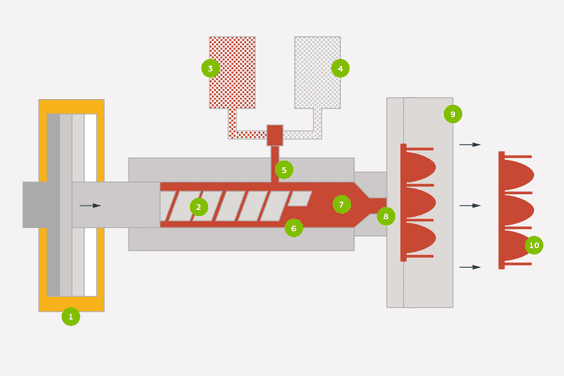
Filler for reinforcement
(1) The type and characteristics of silica, silicone rubber reinforcing filler mainly refer to synthetic silica, also known as silica. Silica is divided into fumed silica and precipitated silica.
a. The size, specific surface area, surface properties, and structure of fumed silica particles are related to the ratio of raw material gas, combustion speed, SiO2 nuclei residence time in the combustion chamber, and other factors.
The finer the particles of fumed silica, the larger its specific surface area, and the better the reinforcement effect, but the worse the operational performance. On the contrary, its particles are coarser and the specific surface area is smaller, the reinforcement effect is poor, but the operability is better.
Fumed silica is one of the most commonly used reinforcing agents for silicone rubber, and the rubber reinforced by it has high mechanical strength and good electrical properties of vulcanized rubber. Fumed silica can also be used with other reinforcing agents or weak reinforcing agents to produce different requirements for the use of rubber.
Precipitated silica
The performance of precipitated silica is affected by precipitation conditions such as acidity and temperature.
Compared with the silicone rubber compound reinforced with fumed silica, the mechanical strength of the compound reinforced with precipitated silica is slightly lower, and the dielectric properties, especially after moisture, are poorer, but the heat resistance aging properties are better, and the cost of the compound is much lower. When the mechanical strength of the product is not high, precipitated silica can be used or used with fumed silica.
Silica can be treated with suitable compounds to make a surface hydrophobic substance. There are two main methods of treatment: liquid phase and gas phase.
The liquid phase method is easy to control the conditions, the product quality is stable and the treatment effect is good, but the process is complicated and the solvent needs to be recovered; the gas phase method is simple, but the quality of the product is not stable enough and the treatment effect is poor.
The substances used as surface treatment agents are, in principle, the following substances that can interact with the hydroxyl groups on the surface of silica.
- Alcohols
- Chlorosilanes
- Alkoxysilane
- Hexamethyldisilyl ether
- Silazane
(2) Reinforcement mechanism of silica, surface chemistry of silica on silicone rubber. It is believed that there are two kinds as follows.
Rubber adsorption by filler particles adsorption polymer, so that rubber molecular chain segments are directly fixed in the vicinity of the filler particles or oriented along the filler surface or retained by the filler aggregates.
b. Rubber and filler particles combined with filler particles and polymer chain segments combined to produce effective cross-linking and polymer entanglement of the filler particles.
Based on the above two effects, silica has a reinforcing effect on silicone rubber.
The acidity and alkalinity of silica vary depending on its production method. Fumed silica is acidic and precipitated silica is alkaline.
The pH value of the purest HCL-free fumed silica is 6, which is due to the dissociation of hydroxyl groups on the surface of silica in water to produce H+. pH value below 4.6 is due to the HCL retained by high-temperature hydrolysis.
(3) Measurement method of physical and chemical properties of silica
The physical and chemical properties of silica directly reflect the quality, so it is very important to accurately measure the different requirements for use. At present, the indicators of foreign manufacturers are not the same, but some important indicators are recognized to be measured by each family.
The most important indicators are indicators reflecting its primary structure, such as particle size and dispersion, specific surface area; indicators reflecting its secondary structure, such as oil absorption value, etc.; indicators reflecting its surface chemistry, such as the concentration of various hydroxyl groups on the surface, etc.
particle size and particle size distribution due to the generation conditions, and particle growth differences, so the silica particle diameter is not uniform, the usual particle diameter, only has the meaning of statistical average.
The determination of specific surface area is an indicator of the size of the external surface area of the powder material, for porous powder material, its specific surface area is the sum of the surface area and the external surface area of the pores.
Generally speaking, the particle size of the powder substance is inversely related to its specific surface area, so the determination of specific surface area can qualitatively reflect the particle size of the powder. Since the electron microscope is not available in all industrial units, the particle size of the powder is not available, thus the determination of specific surface area has important practical application value.

c. Determination of surface hydroxyl group There are silanol groups on the surface of silica, and many applications of silica are directly related to such groups, so it is very important to quantitatively determine the surface hydroxyl group.
The data for the determination of the surface hydroxyl group of silica generally include the total hydroxyl group, adjacent hydroxyl group, and isolated hydroxyl group.
The latter two are combined on the surface of silica in the form of Si-OH, collectively referred to as the combined hydroxyl group; the total hydroxyl group is the sum of the combined hydroxyl group and the hydroxyl group in the water molecules adsorbed on the surface of silica, and these hydroxyl group data can be determined under different conditions respectively. The measurement conditions are.
(1) The hydroxyl group measured by direct sampling from the silica bag is the total hydroxyl amount.
(2) The hydroxyl group measured by drying the silica at 110°C for 3 hours is the bound hydroxyl group.
(3) The hydroxyl group measured after drying the silica at 600°C for 3 hours is the isolated hydroxyl group.
(4) The difference between the combined hydroxyl group and the isolated group is the adjacent hydroxyl group.
d. The determination of secondary structure abroad generally believes that the degree of the secondary structure directly affects the filler reinforcement behavior, so the determination of secondary structure is also very important.
But so far there is not a good method of determination, the most widely used methods are two: one is to determine the apparent specific volume under compression; the second is to determine the oil absorption value.
Weakly reinforcing filler
Weak reinforcing filler can also be called inert filler, only a small reinforcing effect on silicone rubber, they are generally not used alone in silicone rubber, but with the role of silica, to adjust the hardness of silicone rubber, improve the process performance of rubber and vulcanization rubber oil resistance and soluble properties, reduce the cost of rubber.
Commonly used weak reinforcing agents are diatomaceous earth, quartz powder, zinc oxide, titanium dioxide, zirconium silicate, calcium carbonate, etc.



